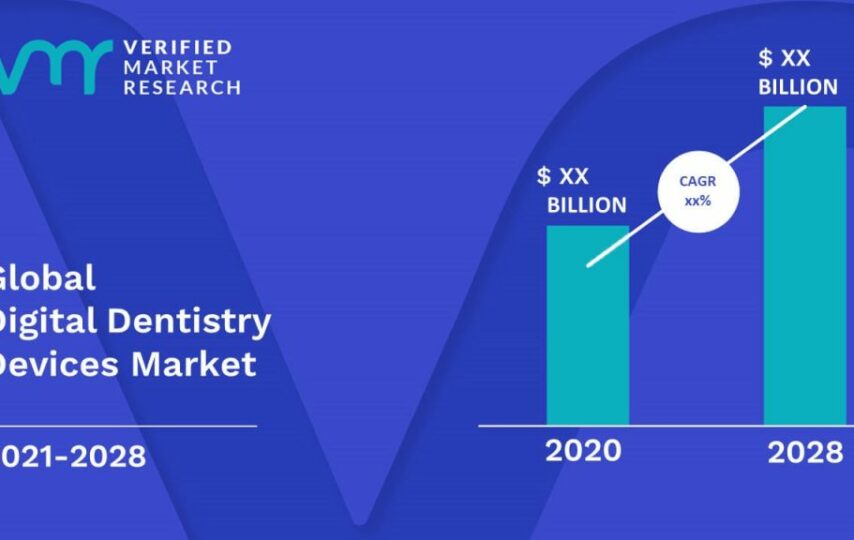The Advancements in Technology Driving the Growth of Digital Dentistry Market
Digital dentistry refers to the use of digital technologies and computer-aided design and manufacturing (CAD/CAM) techniques in dentistry. It involves the use of digital scanners, 3D printers, and other advanced technologies to create highly accurate digital models of a patient’s teeth, gums, and jaw.
Digital dentistry offers several advantages over traditional methods of dentistry. For example, digital scanners can create highly accurate digital models of a patient’s teeth in a matter of minutes, whereas traditional impression techniques can take much longer and may be less accurate. Additionally, digital models can be easily stored and transferred between dentists, which can improve communication and collaboration between dental professionals.
Another advantage of digital dentistry is that it allows for the creation of highly precise restorations, such as crowns, bridges, and veneers. CAD/CAM technology can be used to design and fabricate these restorations in a matter of hours, rather than days or weeks, as is often the case with traditional methods.
Overall, digital dentistry offers many benefits for both patients and dental professionals, including improved accuracy, faster treatment times, and better outcomes.
Digital dentistry has revolutionized the way dental treatments are planned and delivered. It allows dentists to provide more accurate diagnoses and better treatment outcomes for their patients. Digital technologies, such as digital X-rays and intraoral cameras, provide dentists with detailed images of a patient’s mouth that can be magnified and manipulated to enhance visualization of dental structures and better identify any problems.
Another significant benefit of digital dentistry is that it can improve patient comfort during dental treatments. Traditional impression techniques often require patients to bite into a putty-like material that can be uncomfortable and cause gagging. Digital scanners eliminate the need for this process, as they can create a highly accurate digital model of a patient’s teeth and gums without any discomfort.
Digital dentistry also offers a greater level of customization for dental restorations. CAD/CAM technology allows dentists to design restorations that are tailored to a patient’s specific needs and preferences, resulting in a more natural and aesthetic appearance.
In addition to these benefits, digital dentistry can also improve the efficiency and productivity of dental practices. Digital records and digital communication systems enable dental professionals to work more collaboratively and efficiently, reducing the need for physical records and paperwork.
Overall, digital dentistry has transformed the dental industry by providing dentists with more accurate, efficient, and personalized treatment options, while also improving the patient experience and outcomes.
Digital dentistry has also facilitated the use of virtual and augmented reality in dental education and training. With the help of virtual and augmented reality technologies, dental students and professionals can gain hands-on experience in a simulated environment before treating actual patients. This helps to improve their skills and confidence, and reduces the risk of errors during real dental procedures.
Furthermore, digital dentistry has enabled the creation of dental implants and prosthetics that are more accurate and have a better fit than traditional prosthetics. Digital impressions and imaging can be used to create 3D models of a patient’s teeth and gums, which can then be used to design and fabricate dental implants and prosthetics that fit precisely and comfortably in the patient’s mouth.
Digital technologies have also made it possible to perform guided implant surgery, which involves the use of digital imaging and computer-guided technology to precisely place dental implants. This technique minimizes the risk of complications and improves the accuracy and predictability of the implant placement.
In summary, digital dentistry has revolutionized the field of dentistry by offering several benefits such as improved accuracy, efficiency, and patient comfort. It has also led to the development of new treatment options, improved education and training, and greater customization of dental restorations. With continued advancements in technology, digital dentistry is expected to play an increasingly important role in the future of dental care.
Digital dentistry has also made it easier for dentists to monitor the progress of their patients’ dental health over time. Digital records and imaging can be easily stored and accessed, allowing dentists to quickly review a patient’s treatment history and identify any changes or potential issues.
Moreover, digital dentistry has led to the development of teledentistry, which allows dentists to provide remote consultations and treatment to patients who may not have access to traditional dental care. Through teledentistry, dentists can evaluate a patient’s dental health through video conferencing, provide treatment recommendations, and even prescribe medication if needed.
Another significant advantage of digital dentistry is that it reduces the amount of radiation exposure associated with traditional X-rays. Digital X-rays use a much lower amount of radiation, making them a safer and healthier option for patients.
Digital dentistry has also improved the patient experience by reducing the number of visits required for some procedures. For example, with same-day crown technology, a patient can receive a new dental crown in just a few hours, rather than requiring multiple appointments and weeks of waiting for a traditional crown to be fabricated.
Overall, digital dentistry has transformed the way dental care is provided, making it more efficient, accurate, and accessible. As technology continues to evolve, the possibilities for digital dentistry are endless, and it is exciting to see how it will continue to improve the dental care experience for both patients and dental professionals.








